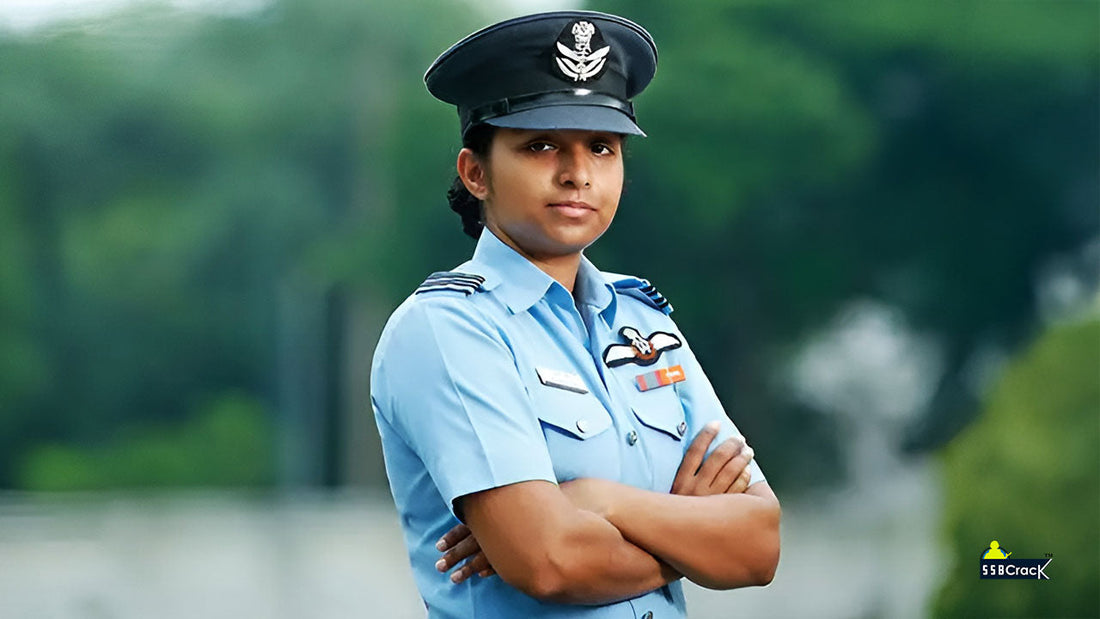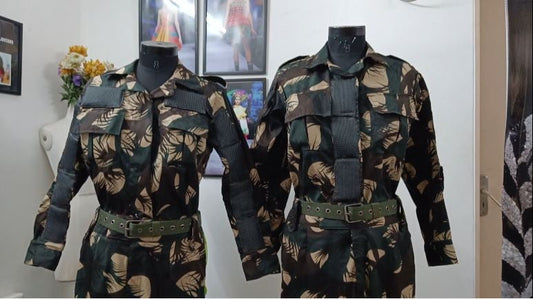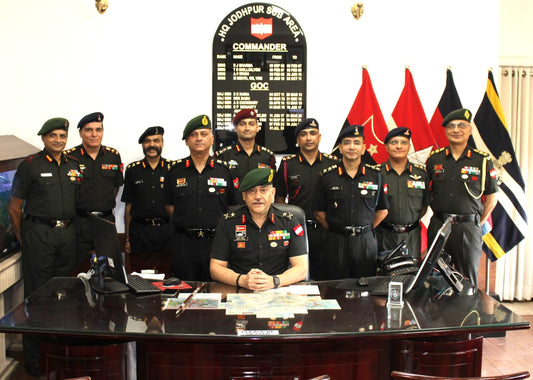What are the Power and Duties of an Indian Air Force Flight Lieutenant?

The Indian Air Force (IAF) is one of the most prestigious and formidable branches of the Indian Armed Forces, tasked with safeguarding the nation’s airspace, conducting aerial warfare, and supporting ground and naval operations. Within its ranks, the Flight Lieutenant holds a significant position as a commissioned officer, typically a mid-level rank in the IAF’s hierarchy.
This article explores the powers, duties, and responsibilities of a Flight Lieutenant in the Indian Air Force, shedding light on their critical role in ensuring national security and operational excellence.
Overview of the Flight Lieutenant Rank
The rank of Flight Lieutenant in the Indian Air Force is equivalent to a Captain in the Indian Army or a Lieutenant in the Indian Navy. It is a commissioned officer rank, positioned above Flying Officer and below Squadron Leader. Typically, an officer is promoted to Flight Lieutenant after approximately 2–3 years of service as a Flying Officer, subject to performance, seniority, and successful completion of required training and evaluations.
Flight Lieutenants serve in various branches of the IAF, including the Flying Branch, Technical Branch, Ground Duty (Non-Technical) Branch, and other specialized roles such as Administration, Logistics, Accounts, Education, or Meteorology. Their specific duties and powers depend on their branch, operational role, and posting, but all Flight Lieutenants are entrusted with significant responsibilities that contribute to the IAF’s mission of defending India’s sovereignty and maintaining regional stability.

Powers of a Flight Lieutenant
As commissioned officers, Flight Lieutenants are vested with certain powers that enable them to execute their duties effectively. These powers are derived from the Air Force Act, 1950, and other regulations governing the IAF. Below are the key powers associated with the rank:
1. Command and Leadership Authority:
- A Flight Lieutenant may command a small unit, section, or flight, depending on their branch and assignment. For example, in the Flying Branch, they may lead a small formation of aircraft during missions or training exercises.
- They have the authority to issue orders to subordinates, including non-commissioned officers (NCOs), airmen, and other junior personnel, ensuring discipline and operational efficiency.
- In operational scenarios, Flight Lieutenants can make critical decisions, such as tactical maneuvers during combat or coordinating with other units, under the guidance of senior officers.
2. Administrative Powers:
- Flight Lieutenants are empowered to manage administrative tasks within their unit or section. This includes overseeing personnel management, training schedules, and resource allocation.
- They can recommend disciplinary actions for subordinates, such as initiating inquiries or reporting misconduct, though final decisions rest with higher authorities.
- In non-technical branches like Administration or Logistics, they may have authority over budgets, equipment maintenance, and logistical planning.
3. Operational Decision-Making:
- In the Flying Branch, Flight Lieutenants have the authority to make real-time decisions during missions, such as adjusting flight paths, responding to threats, or coordinating with air traffic control and ground forces.
- In technical roles, they can authorize maintenance procedures, certify aircraft airworthiness, or approve modifications to equipment, ensuring operational readiness.
4. Training and Mentorship:
- Flight Lieutenants are empowered to train and mentor junior officers and airmen, shaping the next generation of IAF personnel. They can design and implement training programs, conduct evaluations, and recommend promotions or specialized training for subordinates.
- They have the authority to assess the performance of their team and provide feedback to improve operational and professional standards.
5. Court-Martial and Disciplinary Powers:
- While Flight Lieutenants cannot convene courts-martial, they can participate in summary trials or investigations as per the Air Force Act. They may act as presiding officers in minor disciplinary cases or assist in gathering evidence for more serious matters.
- They are responsible for maintaining discipline within their unit and reporting any breaches of conduct to higher authorities.
Also Read: What are the Power and Duties of an Indian Air Force Flying Officer?
Duties of a Flight Lieutenant
The duties of a Flight Lieutenant vary significantly based on their branch and role within the IAF. However, certain responsibilities are common across all domains, reflecting their position as mid-level leaders. Below is a detailed breakdown of their duties, categorized by branch:
1. Flying Branch
Flight Lieutenants in the Flying Branch are typically pilots or navigators who operate fighter jets, transport aircraft, or helicopters. Their duties include:
- Operational Missions: Conducting combat missions, reconnaissance, air defense operations, or search-and-rescue missions. For example, a Flight Lieutenant flying a Sukhoi Su-30 MKI may engage in air superiority missions or provide close air support to ground forces.
- Mission Planning: Preparing mission plans, including route planning, fuel calculations, and coordination with other units. They analyze intelligence reports and weather conditions to ensure mission success.
- Training and Simulation: Participating in and leading training exercises, including simulator sessions and live flying drills, to maintain combat readiness and enhance skills.
- Aircraft Management: Conducting pre-flight and post-flight inspections to ensure aircraft are mission-ready. They work closely with technical teams to report and resolve issues.
- Leadership in the Air: Leading small formations (e.g., a pair or quartet of aircraft) during missions, ensuring coordination and communication among crew members.
2. Technical Branch
Flight Lieutenants in the Technical Branch are engineering officers responsible for maintaining and servicing aircraft, weapons systems, and other equipment. Their duties include:
- Aircraft Maintenance: Overseeing the maintenance, repair, and servicing of aircraft, radars, and missile systems to ensure operational readiness.
- Technical Supervision: Leading teams of technicians and airmen in performing complex repairs, upgrades, or modifications to equipment.
- Quality Assurance: Certifying the airworthiness of aircraft after maintenance, ensuring compliance with safety and performance standards.
- Innovation and Upgrades: Contributing to the development or integration of new technologies, such as avionics upgrades or weapon system enhancements.
- Resource Management: Managing spare parts, tools, and technical resources to minimize downtime and maintain operational efficiency.
3. Ground Duty (Non-Technical) Branch
In non-technical roles, such as Administration, Logistics, Accounts, Education, or Meteorology, Flight Lieutenants perform critical support functions. Their duties include:
- Administration: Managing personnel records, welfare programs, and unit discipline. They may oversee facilities like air bases or training centers.
- Logistics: Coordinating the supply chain for fuel, ammunition, spare parts, and other resources critical to IAF operations.
- Accounts: Managing budgets, financial audits, and disbursements for their unit, ensuring fiscal responsibility.
- Education: Conducting training programs, developing educational materials, or mentoring personnel in professional development courses.
- Meteorology: Analyzing weather data to provide accurate forecasts for flight operations, ensuring safety and mission success.
4. General Duties Across Branches
Regardless of their branch, Flight Lieutenants share several common responsibilities:
- Leadership and Team Management: Leading and motivating teams of airmen, NCOs, and junior officers to achieve operational and organizational goals.
- Operational Readiness: Ensuring their unit or section is prepared for immediate deployment in peacetime or wartime scenarios.
- Documentation and Reporting: Maintaining records, submitting mission reports, and providing updates to senior officers on operational and administrative matters.
- Professional Development: Continuously upgrading their skills through training programs, courses, and certifications to prepare for higher responsibilities.
- Liaison and Coordination: Collaborating with other branches of the IAF, Indian Army, Navy, or civilian agencies during joint operations or disaster relief missions.
Challenges Faced by Flight Lieutenants
Flight Lieutenants operate in high-pressure environments, often dealing with life-or-death situations, especially in the Flying Branch. Some of the challenges they face include:
- High-Stakes Decision-Making: In combat or emergency situations, Flight Lieutenants must make rapid decisions that could impact mission outcomes or personnel safety.
- Physical and Mental Demands: Pilots face extreme physical conditions, such as high G-forces, while technical and ground duty officers manage complex tasks under tight deadlines.
- Work-Life Balance: Frequent postings, long working hours, and deployments to remote areas can strain personal and family life.
- Adaptability: The dynamic nature of modern warfare, including cyber threats and advanced technologies, requires Flight Lieutenants to stay updated and adaptable.
Career Progression and Opportunities
Flight Lieutenants are at a pivotal stage in their careers, where their performance directly influences their prospects for promotion to Squadron Leader and beyond. They undergo advanced training, take on leadership roles, and may be selected for specialized courses in India or abroad. Exceptional officers may also transition to roles in test piloting, training academies, or strategic planning.
Also Read: What are the Power and Duties of an Indian Air Force Squadron Leader?
Conclusion
The role of a Flight Lieutenant in the Indian Air Force is both challenging and rewarding, requiring a blend of technical expertise, leadership, and courage. Whether soaring through the skies in a fighter jet, ensuring the airworthiness of critical equipment, or managing logistical operations, Flight Lieutenants are integral to the IAF’s mission of protecting India’s airspace and contributing to national security.
Their powers and duties reflect their position as mid-level leaders, entrusted with responsibilities that demand precision, discipline, and dedication. As they navigate the complexities of modern warfare and support roles, Flight Lieutenants embody the IAF’s motto, “Nabha Sparsham Deeptam” (Touch the Sky with Glory), serving as pillars of strength in India’s defense framework.



















